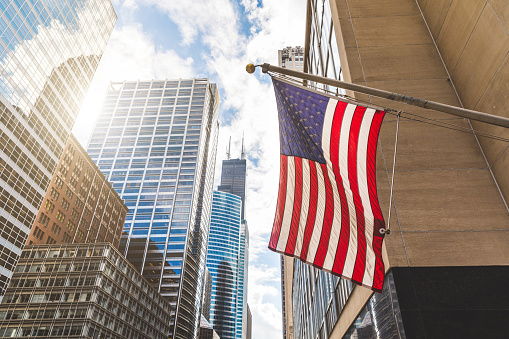What Kind of Economy Does the United States Have?
The United States has a market economy. Government also has a role, providing public goods and services for people. The government pays for these goods and services from tax revenues. It also redistributes income. These three types of government influence the economy in different ways. Each type is different, but the basic principles remain the same.
Mixed economy
A mixed economy is a system in which private businesses and government have a balanced relationship. This allows for competition between businesses while maintaining government controls for the welfare of society. While a mixed economy has its drawbacks, it has several positives. For example, it is a more stable economy. Additionally, it offers business owners and consumers freedom.
Mixed economies often include a social safety net, such as unemployment benefits or a pension for old age. These social programs ensure that low income individuals have some income security and are not left out. These programs also help people stay in the community. These benefits are provided by the government through taxation. However, mixed economies also tend to have a high level of inequality.
A mixed economy is an economic system that combines aspects of both a market economy and a command economy. Market economies are based on the free market and allow competition to occur, while command economies rely on government intervention and planning. In a mixed economy, the government plays an important role in resource allocation.
In a mixed economy, individuals are both producers and consumers. They also vote for officials who will govern them. This mixture is constantly changing, making it dynamic. It also allows the government to respond to the needs and concerns of the public. As a result, government agencies are dedicated to protecting the interests of the public, which in turn helps the economy grow.
While the mixed economy allows for a free market, too much government intervention can harm producers. It may result in government monopolies in some sectors, slowing down the economy and creating more debt for the people. One example of this is the energy industry, which used to be dominated by government agencies, but now has a competitive environment.
Although both theories have elements of truth, the United States has a very mixed economy. In fact, the United States has an economic freedom score of 75.7, which places it among the most free nations in the world. However, the balance between private businesses and government ownership is still not perfect.
Free market
In the United States, the free market economy has had its ups and downs. It is a highly competitive system where profits are the primary motivation. While this approach can be beneficial in many ways, it is also fraught with ethical questions. While there is nothing wrong with profit-driven economics, it is important to remember that profit should never take precedence over the needs of workers and consumers. In particular, companies should not compromise their ethical conduct or environmental standards in order to maximize profits. The Deepwater Horizon oil spill, which was caused by cost-cutting measures, is a prime example of unethical behavior in the free market economy.
Free market economies are characterized by the absence of a central government, in which consumers and businesses are free to choose the best products. In such an economy, the price of a commodity is determined by its demand. Private businesses and corporations control the means of production, while governmental control is limited to controlling wages and employment.
Free market economies are the best for economic growth and innovation. They also promote consumer choice and a free society. Studies have shown that economies with more economic freedom consistently outperform economies with greater central planning. But in the United States, government regulation is more severe than in other countries. As a result, certain sectors and industries are subject to greater government scrutiny.
A free market economy is one in which the economy is governed by supply and demand with minimum government intervention. This type of economy is self-regulating, benefiting everyone. As long as supply and demand balance, prices should be fair and workers with the best skills should command the highest wages. There are many benefits to free market economics, but there are also many disadvantages.
In a free market, decisions are made by businesses under the pressure of competition and supply and demand. While this may sound ideal, the reality is a little different. Free market economies are not perfect and can suffer from inefficiencies and information asymmetries.
Government-planned economy
A government-planned economy is a system in which most decisions about production and distribution are made by the government. These decisions include what goods should be produced, what services should be provided, and how these goods should be transported. Government-planned economies are also often called command economies. The government sets targets for how many products and services the public will consume over a period of time.
This system was common in the Soviet Union, which consisted of Russia and the bordering states from 1922 to 1991. The Soviet Union owned and controlled all economic resources, allowing it to avoid the economic hardships associated with a market economy. Many economists applauded the system, noting that it saved the Soviet Union from the devastation it would experience if it adopted market-based economic principles.
Central planning is generally associated with communist and socialist countries, and with former communist regimes. In the 1980s, however, most countries abandoned central planning. China, for example, privatized state-owned enterprises to fuel economic growth. The United States, however, does not use this system.
In contrast, most Americans believe that a government-planned economy is less efficient than a market economy. The government does not profit from market prices, so it is less likely to heed market signals. The government also doesn’t feel market discipline as compared to private businesses. As a result, it relies on tax revenue.
The United States has long believed that some services should be provided by government instead of private enterprise. For example, the government provides services like justice, education, road systems, and national defense. It also often intervenes in the economy to correct problems with the pricing system. It also uses antitrust laws to break up powerful business combinations. The government is also involved in social programs.



